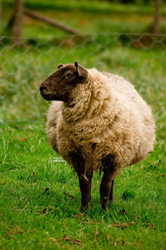Reducing the numbers of dormant virus in sheep blood
The development of a suitable vaccine for combating small ruminant lentiviruses (SRLVs), which affects sheep and goats, has proven to be a major challenge for scientists. This has been as a result of limited information regarding target antigens, protective immune responses and vaccine strategies. The MVAC project studied the most suitable antigens for achieving protection and the best vaccination strategies were investigated. Researchers evaluated DNA vaccine strategies in sheep challenged with MVV, which causes encephalitis and chronic pneumonitis. Sheep were immunised systemically with the gag gene and gag interferon (gagIFN). The gag gene codes for precursors of internal virus proteins surrounding the retrovirus genome. These trial sheep demonstrated a significant reduction in provirus load in their blood. The provirus is a virus genome that has integrated itself into the host cell's DNA and is passively replicated along with the host's genome. However, the research team found that the provirus load in the lung tissue of the animals was not significantly different from the controls. It was also discovered that provirus loads in blood and tissues of sheep immunised with gp150env, which codes for intermediates for proteins in the virus envelope, did not differ from controls. The results indicated that the propagation of the virus from the lung tissue was limited by gag immunisation. Therefore, systemic DNA immunisation did not halt infection but induced a reduction in the provirus load in the blood of sheep immunised with the gag gene. Large scale trials were recommended to further test the significance of this data.







